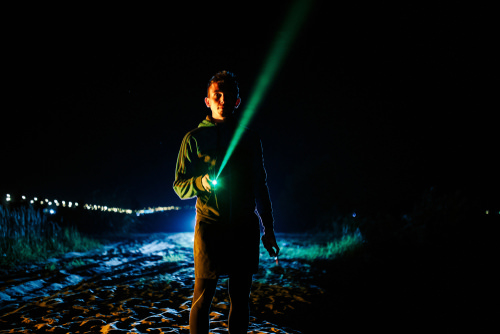Penal Code § 248 PC is the California statute that makes it a crime to shine a light at an aircraft in order to interfere with its operation. A conviction is a misdemeanor punishable by up to one year in county jail and fines of up to $1000.00.
The language of the code section states that:
248. Any person who, with the intent to interfere with the operation of an aircraft, willfully shines a light or other bright device, of an intensity capable of impairing the operation of an aircraft, at an aircraft, shall be punished by a fine not exceeding one thousand dollars ($1,000), or by imprisonment in a county jail not exceeding one year, or by both that fine and imprisonment.
Examples of criminal acts under PC 248 include:
- Roberto shines a tactical light into the cockpit of an airplane while hoping to change the course of the plane’s path.
- Jasmine shines a LED light into the windshield of a helicopter specifically to change its operation.
- Martel shines a laser pointer at a low flying plane in order to make the pilot fly at a slower speed.
Defenses
Luckily, there are several legal defenses that you can raise if accused of a crime under Penal Code 248. These include showing that:
- you had no intent to interfere;
- a light was used that is not capable of impairing operation; and/or
- authorities had no probable cause.
Penalties
A violation of this section is charged as a misdemeanor, as opposed to a California felony or an infraction.
As a misdemeanor, the crime is punishable by:
- imprisonment in a county jail for up to one year; and/or,
- a fine of up to $1,000.
Our California criminal defense attorneys will highlight the following in this article:
- 1. Is it a crime to shine a light at an aircraft?
- 2. Are there defenses to this charge?
- 3. What are the penalties?
- 4. Related Offenses

1. Is it a crime to shine a light at an aircraft?
Penal Code 248 is the California statute that makes it a crime to shine a light at an aircraft in order to interfere with its operation.
A prosecutor must prove three things to successfully convict you of this offense. These are:
- you willfully shined a light at an aircraft;
- the light had an intensity capable of impairing the operation of an aircraft; and,
- you intended to interfere with the operation of the aircraft.1
2. Are there defenses to this charge?
You can challenge the accusation by raising a legal defense.
Three common defenses are:
- you had no intent to interfere;
- the light was not capable of impairing the operation; and/or,
- police had no probable cause to arrest you.
2.1. You had no intent to interfere
Please recall that you must have specifically intended to interfere with an aircraft’s operation in order to be guilty under California Penal Code 248. This means it is always a sound legal defense to show you did not act with this requisite intent.
2.2 The light was not capable of impairing the operation
Also recall that Penal Code 248 says that you are guilty of a crime only if you act with a device that is intense enough to actually impair an aircraft’s operation. It is a defense, therefore, to show that you did not act with such a device (for example, you were holding a match).
2.3. Police had no probable cause to arrest you
The Fourth Amendment to the U.S. Constitution says that police must have probable cause to detain or arrest you for a crime.
If you were stopped or arrested for violating PC 248, and there was no probable cause, then any evidence obtained following the improper stop/arrest could get excluded from the case. This exclusion could result in the dismissal or reduction in charges.

3. What are the penalties?
A violation of PC 248 is charged as a misdemeanor.
The crime is punishable by:
- imprisonment in a county jail for up to one year; and/or,
- a fine of up to $1,000.2
In lieu of imprisonment, a judge has the discretion to impose misdemeanor probation, or “summary” or “informal” probation.
4. Related Offenses
There are three crimes related to shining a light at an aircraft with the intent to interfere. These are:
- failure to dim – VC 24409;
- driving in darkness without headlights – VC 24250; and,
- possessing a destructive device – PC 18710.
4.1. Failure to dim – VC 24409
Vehicle Code 24409 VC requires you to dim your headlights, from high beam to low beam, when approaching and following other vehicles.3
If you fail to dim your headlights, you must pay a fine of $238.00.4
4.2. Driving in darkness without headlights – VC 24250
Under California Vehicle Code 24250 VC, it is unlawful in California to drive “during darkness” without headlights.5
If you drive without headlights, you must pay a fine of $230.00.6
4.3. Possessing a destructive device – PC 18710
Penal Code 18710 PC makes it a crime to possess a “destructive device.”7 Destructive devices include things like:
- bombs,
- grenades, or
- explosive missiles.
PC 18710 is a “wobbler” offense, meaning that it may be prosecuted as either a misdemeanor or a felony.
No matter how charged though, the penalties for PC 18710 violations can include:
- imprisonment in a county jail or state prion; and/or,
- substantial fines.8
Legal References:
- California Penal Code 248 PC.
- See same.
- California Vehicle Code 24409 VC.
- See same.
- California Vehicle Code 24409 VC.
- See same.
- California Penal Code 18710 PC.
- See same.
